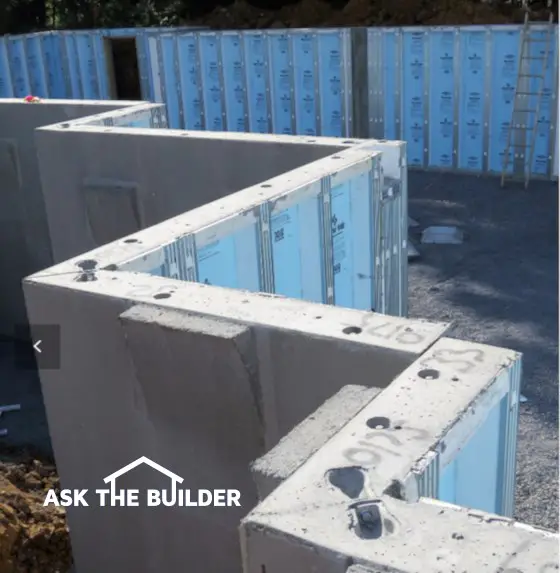Precast Concrete Foundation Walls
Precast concrete foundation walls are fantastic. They can be assembled in hours, have built-in insulation and wall studs and are strong.
Precast Foundation Walls = Fast Installation
DEAR TIM: A builder in my town has suggested that I use precast concrete foundation walls for my new home. I'm a little skeptical of this new process.
He says the walls do not require concrete footers. They use compacted crushed stone. Do you feel the precast walls are a good choice? Are there any other benefits? Are they code approved? Maria B., Paris KY
Related Content
Waterproofing Foundations Equals Bone-Dry Basements
Poured Concrete vs Concrete Block Foundations - Which One is Best?
DEAR MARIA: If the precast concrete foundation walls this builder is promoting are like the ones I've seen, they may be ideal for your new home. Precast concrete technology has been around for years in the commercial construction industry and only recently has it started to supplant traditional residential foundation construction methods. There are huge advantages in building with precast foundation components.
Free & Fast Bids
CLICK HERE to get FREE & FAST BIDS from local foundation contractors.
Precast Walls Built In Controlled Conditions

This is an excellent example of a precast concrete foundation wall system. This one is by Superior Walls. Note how the corners are mitered, the closed-cell insulation and interior wall studs. Copyright 2018 Tim Carter
I have a traditional poured concrete foundation in my own home, but I also was fortunate and had the absolute best foundation company in my town install it. You might not be so lucky.
Here are a few things that can go wrong with a traditional block or poured concrete foundation system. A block foundation hod carrier may mix the mortar too weak. An inexperienced block layer may add water to stiff mortar and weaken it. The block foundation may not have any inexpensive reinforcing steel in it.
Poured foundation walls can have cold seams where one batch of concrete gets hard while the next concrete truck is mired in mud in the middle of the job site. The top of a poured in place foundation wall can be out of level.
If the forms are not checked and braced before the pour, the foundation can be out of plumb and out of square. Many poured concrete walls have no vertical steel in them. Excessively cold or hot weather can harm concrete or block walls as they are built in the field. Rainfall can stop the traditional foundation construction process in its tracks.
Crushed Compacted Stone is Strong
The precast foundation systems solve all of these problems and more. The fact that they do not require a concrete footer does not surprise me.
Virtually every roadway around the word uses crushed stone as a base. Railroad tracks are laid on crushed rock as well. Both of these support far more concentrated loads than the foundation of your home.
If the soil beneath the foundation is weak, the builder can increase the depth and width of the crushed stone. Frank Lloyd Wright used this method to support foundations on some of his works of art.
CLICK HERE to get FREE & FAST BIDS from local foundation contractors.
Precast Walls Built in Factories In Ideal Conditions
The precast systems appeal to me for many reasons. They are poured in controlled conditions in a factory. They use 5,000 pounds per square inch (PSI) strength concrete. Most traditional poured walls use 3,500 PSI concrete.
The precast walls are cured in the factory so they are guaranteed to achieve the intended design strength. The precast concrete walls are poured square. Once assembled your foundation will be plumb, level and square.
Closed-Cell Foam Means Warm Basements - Save Energy
The precast systems have 1-inch, or more, foam insulation built into the walls. This minimizes cold conduction problems in northern climates. Treated lumber nailers are incorporated in the walls as well. There is no need to build an additional wood interior wall if you desire to finish your basement.
Fast Erection Usually In One Day
Perhaps the best feature of a precast system is that it can be erected in most cases in less than a day. Once the crushed gravel base is in place, a crane and experienced crew set the panels like a giant erector set.
The wall panels come in heights from 4 feet to 10 feet. Any shape or size foundation can be built. You can have window or door openings included as well. The panels are bolted together and waterproofed with special high-performance urethane caulks. If you follow the manufacturers' backfill recommendations, you will not have a drop of water enter these foundation walls.
That said, I'd absolutely install a backup traditional waterproofing compound on the exterior to ensure water never enters your basement.
Precast Foundation Walls Meet All Codes
The precast concrete foundations should sail through your building department approval process. The precast system is recognized and accepted by many of the national model building codes. If your building inspector has a problem or has not worked with them before, the manufacturer will assist you in educating the building department in your town.
Photo Credit: Superior Walls
Companion Articles: Precast Concrete Walls, Precast Concrete Foundation Companies, Precast Foundation Wall Illustrations
CLICK HERE to get FREE & FAST BIDS from local foundation contractors.
Column 266
2 Responses to Precast Concrete Foundation Walls